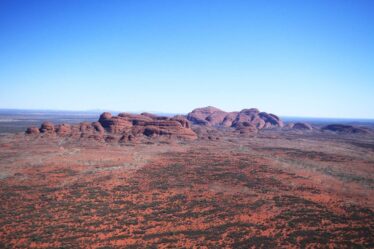
The Great Barrier Reef, located off the coast of Queensland, Australia, is one of the most extraordinary natural wonders of the world. Spanning over 2,300 kilometers, it is the largest coral reef system on the planet, composed of nearly 3,000 individual reefs and 900 islands. This UNESCO World Heritage Site is renowned for its breathtaking biodiversity, vibrant marine life, and stunning underwater landscapes. This detailed guide will provide an in-depth look at the Great Barrier Reef, including its history, ecology, top attractions, activities, conservation efforts, and travel tips.
History and Significance
Formation and Evolution
The Great Barrier Reef began forming approximately 20,000 years ago, following the last Ice Age when rising sea levels submerged the continental shelf of Australia. Over millennia, coral polyps—the tiny organisms that make up coral reefs—built the massive structure that we see today. The reef continues to grow and evolve, shaped by natural processes and environmental changes.
Cultural Heritage
For over 60,000 years, the Great Barrier Reef has been an integral part of the cultural and spiritual heritage of Aboriginal and Torres Strait Islander peoples. These Indigenous communities have a deep connection to the reef, reflected in their stories, traditions, and sustainable practices.
World Heritage Status
In 1981, the Great Barrier Reef was designated a UNESCO World Heritage Site, recognizing its outstanding universal value. The reef is celebrated for its ecological significance, supporting an incredible diversity of marine life and providing critical ecosystem services.
Ecology and Biodiversity
Marine Life
The Great Barrier Reef is home to an astonishing variety of marine species, including:
- Coral: Over 400 species of hard and soft corals form the backbone of the reef.
- Fish: More than 1,500 species of fish, from tiny clownfish to large groupers, inhabit the reef.
- Mollusks: Giant clams, octopuses, and a myriad of colorful nudibranchs are found throughout the reef.
- Marine Mammals: Dugongs and several species of dolphins and whales frequent the waters.
- Sea Turtles: Six of the world’s seven species of sea turtles, including the green turtle and hawksbill turtle, can be found here.
- Birds: The reef and its islands are important breeding grounds for seabirds, such as the white-bellied sea eagle and various species of terns.
Ecosystems
The Great Barrier Reef encompasses a range of interconnected ecosystems, including coral reefs, mangroves, seagrass beds, and islands. Each of these habitats plays a crucial role in maintaining the overall health and resilience of the reef.
Top Attractions
Cairns
Cairns is a popular gateway to the Great Barrier Reef, offering a wide range of tours and activities. Visitors can embark on snorkeling and diving excursions, take scenic flights, or join a liveaboard trip for an immersive reef experience. The Cairns Esplanade and the Cairns Aquarium are also notable attractions.
Whitsunday Islands
The Whitsunday Islands, a group of 74 tropical islands, are renowned for their pristine beaches, crystal-clear waters, and luxury resorts. Highlights include Whitehaven Beach, known for its pure silica sand, and Hamilton Island, offering a range of recreational activities and accommodation options.
Port Douglas
Port Douglas, a charming coastal town, provides easy access to the northern sections of the reef. The town is known for its upscale resorts, vibrant dining scene, and proximity to the Daintree Rainforest. Popular reef tours depart from the nearby marina, including trips to the Low Isles and the outer reef.
Heron Island
Heron Island, located in the southern part of the reef, is a haven for nature lovers and marine enthusiasts. The island offers excellent snorkeling and diving opportunities right off the beach, as well as guided nature walks and turtle nesting tours.
Lady Elliot Island
Lady Elliot Island, situated at the southern tip of the reef, is famous for its clear waters and abundant marine life. The island is a designated Green Zone, ensuring the protection of its pristine environment. Visitors can enjoy snorkeling, diving, and glass-bottom boat tours.
Activities and Experiences
Snorkeling and Diving
Snorkeling and diving are the most popular activities on the Great Barrier Reef, offering unparalleled opportunities to explore its vibrant underwater world. Many tour operators provide guided trips, with options for all skill levels. Some of the best snorkeling and diving sites include:
- Agincourt Reef: Known for its clear waters and diverse marine life.
- Osprey Reef: A remote and pristine dive site with stunning coral formations and pelagic species.
- Ribbon Reefs: A series of narrow reefs offering exceptional diving with rich biodiversity.
- Cod Hole: Famous for its friendly potato cod and excellent visibility.
Scenic Flights
Scenic flights over the Great Barrier Reef provide a breathtaking perspective of its vast expanse and intricate patterns. Helicopter and seaplane tours offer stunning aerial views of iconic sites such as Heart Reef, Hardy Reef, and the Whitsunday Islands.
Sailing and Cruising
Sailing and cruising are wonderful ways to experience the beauty of the Great Barrier Reef. Various operators offer day trips, sunset cruises, and multi-day sailing adventures, allowing visitors to explore secluded beaches, snorkel in pristine waters, and enjoy the serene surroundings.
Marine Biologist Tours
For a deeper understanding of the reef’s ecology and conservation, consider joining a tour led by a marine biologist. These educational tours provide insights into the reef’s marine life, environmental challenges, and ongoing research efforts.
Turtle Watching
From November to March, several islands on the Great Barrier Reef host nesting and hatching sea turtles. Guided turtle tours on Heron Island, Lady Elliot Island, and Mon Repos allow visitors to witness these remarkable events and learn about turtle conservation.
Conservation and Sustainability
Threats to the Reef
The Great Barrier Reef faces several significant threats, including climate change, coral bleaching, coastal development, pollution, and overfishing. Rising sea temperatures and ocean acidification pose the most pressing challenges, leading to widespread coral bleaching and ecosystem degradation.
Conservation Initiatives
Numerous organizations and initiatives are dedicated to protecting the Great Barrier Reef. Key conservation efforts include:
- Great Barrier Reef Marine Park Authority (GBRMPA): This government agency manages the reef and implements policies to ensure its protection and sustainable use.
- Reef 2050 Long-Term Sustainability Plan: A comprehensive plan developed by the Australian and Queensland governments to safeguard the reef’s health and resilience.
- Research and Monitoring: Various institutions conduct ongoing research and monitoring programs to track the reef’s condition, study its ecosystems, and develop conservation strategies.
- Coral Restoration: Initiatives such as coral nurseries and reef rehabilitation projects aim to restore damaged areas and enhance the reef’s resilience.
Responsible Tourism
Visitors to the Great Barrier Reef can contribute to its conservation by practicing responsible tourism. Tips for minimizing your environmental impact include:
- Choose Eco-Friendly Operators: Select tour operators that adhere to sustainable practices and support reef conservation.
- Follow Guidelines: Respect marine life, avoid touching corals, and follow the instructions of guides and operators.
- Reduce Plastic Use: Minimize the use of single-use plastics and dispose of waste properly.
- Support Conservation Efforts: Consider donating to or volunteering with organizations working to protect the reef.
Practical Information
Best Time to Visit
The Great Barrier Reef can be visited year-round, but the best time to explore is during the dry season from June to October. During this period, the weather is pleasant, visibility is high, and the risk of marine stingers (jellyfish) is lower. The wet season, from November to May, brings warmer temperatures and occasional rain, but it’s also the best time for turtle nesting and hatching.
Getting There
The Great Barrier Reef is accessible from several key locations along the Queensland coast. Major gateways include:
- Cairns: The main entry point for reef tours, with an international airport and numerous tour operators.
- Port Douglas: A short drive north of Cairns, offering easy access to the northern reef.
- Airlie Beach: The gateway to the Whitsunday Islands, with frequent boat tours to the reef.
- Gladstone: Access point for Heron Island and other southern reef destinations.
Accommodation
A wide range of accommodation options is available to suit all budgets and preferences. Choices include luxury resorts, eco-lodges, beachfront hotels, and budget-friendly hostels. Popular destinations such as Cairns, Port Douglas, and the Whitsunday Islands offer a variety of lodging options.
Health and Safety
When visiting the Great Barrier Reef, consider the following health and safety tips:
- Marine Stingers: During the wet season, marine stingers (jellyfish) can be present. Wear stinger suits when swimming or snorkeling, and follow safety advice from tour operators.
- Sun Protection: The Australian sun can be intense, so use high-SPF sunscreen, wear protective clothing, and stay hydrated.
- Dive Safety: If planning to dive, ensure you are medically fit and follow all safety protocols. Choose reputable dive operators and avoid diving if you have any health concerns.
Conclusion
The Great Barrier Reef is a natural wonder that offers an unparalleled experience of marine beauty and diversity. From its vibrant coral reefs and abundant marine life to its pristine islands and rich cultural heritage, the reef is a destination that captivates and inspires. By exploring the Great Barrier Reef responsibly and supporting conservation efforts, visitors can help ensure that this magnificent ecosystem remains healthy and vibrant for generations to come. Whether you’re snorkeling among colorful corals, sailing through turquoise waters, or simply soaking in the breathtaking views, the Great Barrier Reef promises an unforgettable adventure in one of the most remarkable places on Earth.


